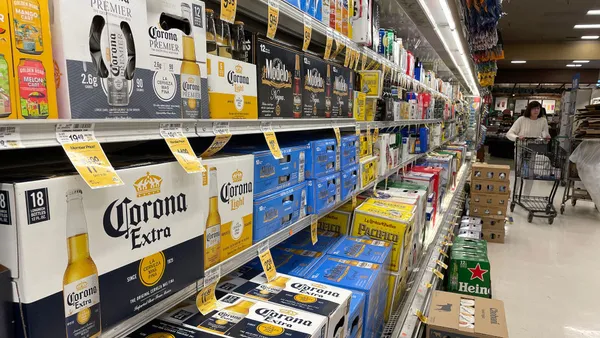Dive Brief:
- Snack food consumption increased 8% in April during the pandemic, according to a new study from the NPD Group, with savory and sweet options among the biggest beneficiaries.
- NPD also found during the month that 37% of consumers said they stocked up primarily on salty snacks and frozen sweets in order to make sure they had sufficient snack foods available during the shelter-in-place orders.
- The stockpiling caused between-meal snacking occasions to rise 4% in April as the study found consumers who had five or more packages of crackers or salty snacks ate them at higher rates than consumers with fewer packages in their homes.
Dive Insight:
The fact that more consumers are turning to snacking is not new, but the coronavirus has changed eating habits and made it more deeply ingrained in the lives of many people. In the NPD study, the group noted craving and convenience were top motivators for snack choice.
Cravings leading the way for purchases in the snack category is supported by Mondelez International data from April showing consumers are seeking out trusted, familiar brands that provide indulgence. The snacking giant behind Oreo and Ritz crackers said shoppers bought more chips, popcorn, cheese and bakery products than other options. Similarly, a quarter of people indulged in chocolate, 25% had more soda and 20% drank more alcohol.
Not only has the sort of snacks consumers are seeking changed but the times during which they are eating them has shifted, as well. Snack foods eaten between meals increased 13% between April 2019 and April 2020 while dinner snack occasions increased 8% driven by salty snacks, dips, cookies and brownies. Breakfast snacking was down 1%, according to the NPD study.
The International Food Information Council recently noted 85% of individuals have altered their diet in some way, with snacking becoming more prevalent. Prior to the coronavirus pandemic, snacking was preferred to eating meals for 59% of adults worldwide, according to Mondelez’s "State of Snacking" report. And salty snacks were gaining ground over treats with a Packaged Facts report estimating the market for salty indulgences will grow from $24 billion in 2017 to more than $29 billion in 2022.
As demand shifts, many companies responded by rolling out direct-to-consumer e-commerce websites that focus on popular staples. PepsiCo, Mondelez and Unilever have taken this approach to boost their product penetration. It also provides them with direct insight into what consumers are putting in their baskets.
While this may work for snacks that consumers are craving, other offerings may just have to wait out the current environment for their growth to return. Following the onset of the coronavirus, Bernstein said sales of performance nutrition bars dropped 20%, meal replacement bars fell 17.9%, weight management bars were down 11% and health and nutrition bars dipped 5.8%. This slump was unprecedented for many manufacturers as snack bars were at the top of the list in terms of dollar sales growth from 2013 to 2016, according to Nielsen.
According to NPD, the interest in wellness has, for the time being, shifted to mental wellbeing, but the research firm predicted that physical wellbeing will eventually regain its shine. If better-for-you brands are able to position their products to speak to consumers and cater to their need for functional mental wellness in addition to convenience and indulgence, they have a good opportunity to more deeply connect with consumers in a "new normal."













